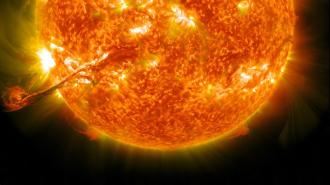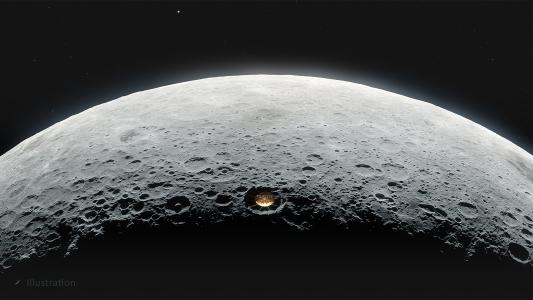On May 1, 2019, the star next door erupted.
In a matter of seconds, Proxima Centauri, the nearest star to our sun, got thousands of times brighter than usual — up to 14,000 times brighter in the ultraviolet range of the spectrum. The radiation burst was strong enough to split any water molecules that might exist on the temperate, Earth-sized planet orbiting that star; repeated blasts of that magnitude might have stripped the planet of any atmosphere.
It would be bad news if the Earth’s sun ever got so angry.
But the sun does have its moments — most famously, in the predawn hours of September 2, 1859. At that time, a brilliant aurora lit up the planet, appearing as far south as Havana. Folks in Missouri could read by its light, while miners sleeping outdoors in the Rocky Mountains woke up and, thinking it was dawn, started making breakfast. “The whole of the northern hemisphere was as light as though the sun had set an hour before,” the Times of London reported a few days later.
Meanwhile, telegraph networks went haywire. Sparks flew from equipment — some of which caught on fire — and operators in Boston and Portland, Maine, yanked telegraph cables from batteries but kept transmitting, powered by the electrical energy surging through the Earth.
The events of that Friday evoked biblical descriptions. “The hands of angels shifted the glorious scenery of the heavens,” reported the Cincinnati Daily Commercial. The actual impetus was a bit more prosaic: The skies had been set ablaze by an enormous blob of electrically charged gas, shot out from the sun following a flash of light known as a solar flare.
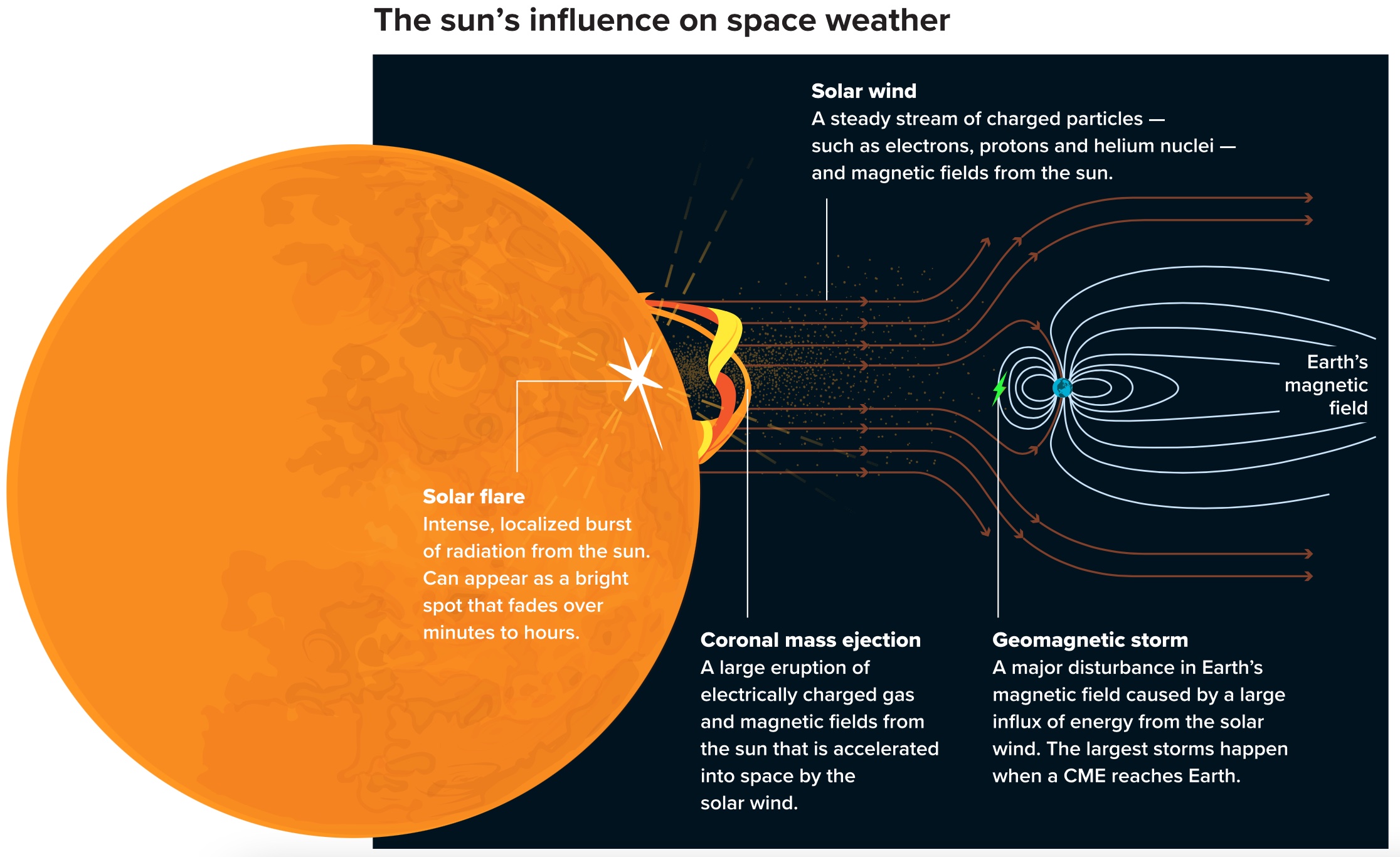
Such a blob — a tangle of plasma and magnetic fields — is known as a coronal mass ejection. Upon arrival at Earth, such an ejection can trigger the most ferocious of geomagnetic storms. The 1859 storm, named the Carrington Event for the scientist who witnessed the flare that preceded it, has long been upheld as the most powerful wallop that the sun has ever delivered.
But in recent years, research has indicated that the Carrington Event was just a taste of what the sun can throw at us. Tree rings and ice cores encode echoes of dramatically stronger solar storms in the distant past. And other stars, such as Proxima Centauri, show that even the most energetic documented solar outbursts pale in comparison with what is possible.
Nevertheless, the Carrington Event offers important clues to what the sun might have in store for Earth in the future, solar physicist Hugh Hudson writes in the 2021 Annual Review of Astronomy and Astrophysics. “Danger lurks for humanity’s technological assets, especially those in space,” writes Hudson, of the University of Glasgow. In the wake of a Carrington-like event today, entire power grids could shut down and GPS satellites could be knocked offline.
Understanding just how severe solar storms can be provides insights into what the universe may sling our way — and maybe how to foretell the next one so that we’re better prepared when it happens.
Anatomy of a flare
Roughly 18 hours before the 1859 event brightened Earth’s skies, an English astronomer noticed something strange on the surface of the sun.
While working in his observatory, Richard Carrington saw two brilliant points of light emerge from among a clutch of dark sunspots and vanish within five minutes. Another English astronomer, Richard Hodgson, saw the same thing, noting that it was as if the brilliant star Vega had appeared on the sun. At the same time, compass-like needles at England’s Kew Observatory twitched, a hint of the magnetic storm about to ensue.
Before then, no one knew about solar flares — mostly because no one was tracking sunspots every clear day the way Carrington was. Decades would pass before astronomers and physicists could unravel the physics of solar flares and their impact on Earth.
A solar flare is an eruption on the sun, a sudden flash of light — usually near a sunspot — that can release as much energy as roughly 10 billion 1-megaton nuclear bombs. The trigger is a sudden, localized release of pent-up magnetic energy that blasts out radiation across the entire electromagnetic spectrum, from radio waves to gamma rays.
Many solar flares, though not all, are accompanied by a coronal mass ejection, a massive chunk of the sun’s hot gas blown into space along with a tangle of magnetic fields. Billions of tons of sun stuff can billow out into the solar system, crossing the 150 million kilometers to Earth’s orbit in anywhere from about 14 hours to a few days.
Most solar eruptions miss our planet by a wide margin. But occasionally, one gets aimed right at Earth. And that’s when things can get interesting.
About eight minutes after a solar flare, its light reaches Earth in a flash of visible light. That’s also when a spike in ultraviolet light and X-rays sprays the upper atmosphere, causing a slight magnetic disturbance at the surface. That was the twitch the magnetic instruments at the Kew sensed in 1859.
The coronal mass ejection can trigger a geomagnetic storm when it encounters the magnetic field that envelops Earth. The disturbance to the magnetic field induces electrical currents to course through conductors, including wires and even the planet itself. At the same time, high-speed charged particles spewed by the sun crash into atoms in the upper atmosphere, lighting up the aurora.
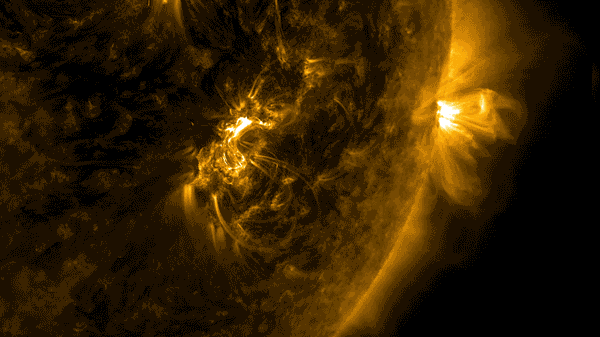
The 1859 flare has long been, and remains, a standout in its energy and effects on Earth. Comparably powerful solar eruptions are often referred to as “Carrington events.” But it does not stand alone.
“It’s oftentimes described as the most intense storm ever recorded,” says Jeffrey Love, a geophysicist at the US Geological Survey in Denver. “That’s possibly not exactly true, but it certainly is one of the two most intense storms.” Or three or four.
In May 1921, the sun dealt our planet a geomagnetic storm on par with the Carrington Event. As in 1859, a brilliant aurora appeared well beyond the polar regions. Telegraph and telephone systems broke down, with some sparking destructive fires.
And just 13 years after Carrington spied his eponymous flare, another solar storm came along that by some measures may have topped it. “It looks now, based on aurora and sparse magnetometer measurements, that an event in 1872 was probably larger than the Carrington Event,” says Ed Cliver, a solar physicist retired from the US Air Force.
These storms show that the Carrington Event wasn’t a “black swan,” Hudson says. If anything, the sun has been holding back in the modern era. Evidence from the more distant past points to a few solar storms that make the Carrington Event seem almost puny by comparison.
Forgotten flares
Trees have long memories. Each year of growth chronicles tidbits about environmental conditions at the time in concentric annual rings. From those rings researchers can reconstruct scenes from Earth’s past.
Some cedar trees in Japan recall a tsunami of atomic particles hurled from the sun around the year 775. Those trees recorded a significant uptick in carbon-14, a radioactive variant of carbon that trees absorb from the atmosphere. Carbon-14 emerges from run-ins between atmospheric nitrogen and cosmic rays — high-speed particles from space that pummel our planet daily. Some solar flares shower Earth with an excess of cosmic rays, which ramps up production of carbon-14. The change in carbon-14 levels recorded in 775 was about 20 times larger than the normal ebb and flow from the sun, researchers reported in 2012.
“The clear suggestion there was that super events could happen, because this was a factor of 10 — if it was a solar flare — a factor of 10 or 20 or more greater than the Carrington Event,” Hudson says.
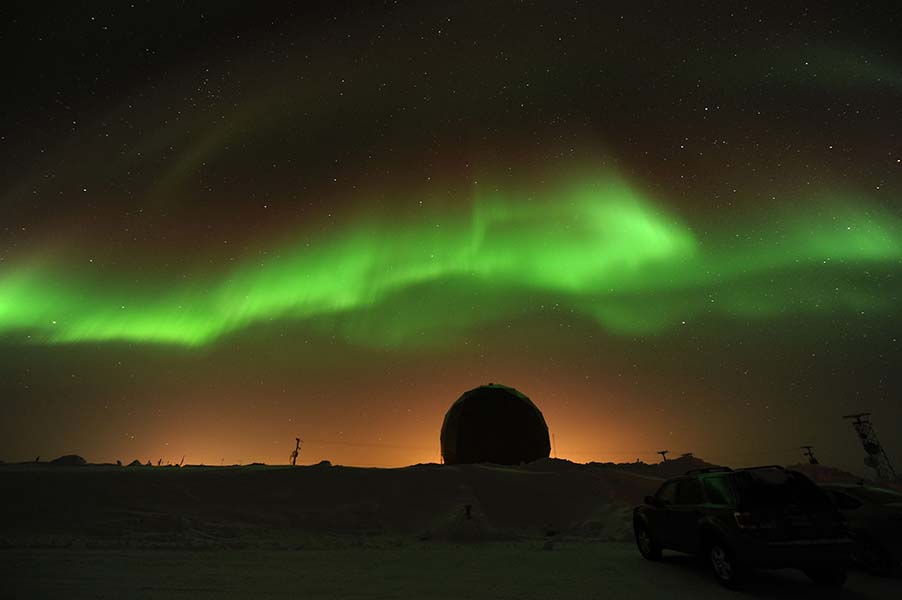
A carbon-14 boost in tree rings showed signs of another sizable solar event in 994. Ice cores from Antarctica showed a corresponding increase, in both 994 and 775, of beryllium-10, another product of cosmic rays — adding more certainty to the tree ring findings.
Looking farther back in time, a study of ice cores suggests a third similar event around 660 BCE. And in August (in a paper still undergoing peer review), researchers reported two more carbon-14 spikes in tree rings from around 7176 BCE and 5259 BCE, possibly on par with the 775 event.
It’s hard to directly compare these past storms with the Carrington Event, says Ilya Usoskin, a space physicist at the University of Oulu in Finland and a coauthor of the August study. The 1859 flare did not produce a particle downpour on Earth, so there are no carbon-14 counts to compare. But the 775 event appears to be one of the strongest solar particle storms recorded in the last 12,000 years, Usoskin says.
There is a catch, Hudson notes. Tree rings are laid down annually, so a few smaller flares within the span of several months might appear as one big event in the tree ring record.
But even then, any one of these smaller flares may still have been impressive. “Every one of those events would be at least on the order of three times as big as the Carrington Event in terms of its energy,” Cliver says.
That, however, is still modest compared with some other stars in our galaxy.
Super flares
If life does exist on the planet orbiting Proxima Centauri, it probably has a rough go of it.
“You really are looking at having something like a Carrington Event happening daily,” says Meredith MacGregor, an astrophysicist at the University of Colorado Boulder. Even stronger “super flares,” like the one she and colleagues spotted in 2019, may go off roughly every other day. Her team spotted that flare, possibly 100 times as powerful as the Carrington Event, after watching the star next door for just 40 hours.
With a near-constant barrage of flares, any atmosphere clinging to the rocky planet snuggled up close to the star would never have time to recover. “Yes, a Carrington Event [on Earth] would fry some electronics and would ruin GPS signals,” MacGregor says, “but it’s not going to destroy the habitability of our planet.”
To be clear, Proxima Centauri is not like the sun. It’s an M dwarf, a diminutive orb that glows red. And these tiny stars are famous for their oversized flares. But some sunlike stars can send up super flares as well.
This realization has come from telescopes in space designed to look for planets around other stars. NASA’s now-defunct Kepler telescope did this by looking for subtle dips in starlight as planets crossed in front of their suns.
Over four years, Kepler recorded 26 super flares — up to about 100 times as energetic as the Carrington Event — on 15 sunlike stars, researchers reported in January. NASA’s ongoing TESS mission, another space-based telescope hunting for exoplanets, found a similar frequency of superflares on sunlike stars in its first year of operation.
The Kepler data imply that sunlike stars experience the most powerful of these flares roughly once every 6,000 years. Our sun’s most powerful eruption in that time span is an order of magnitude weaker — but could a super flare be in our future?
“I don’t think any theory has sufficient predictive capability to mean anything,” Hudson says. “The leading theory basically says that the bigger the sunspot, the greater the flare.” Sunspots mark where the sun’s magnetic field punches through its surface, preventing hot gas from bubbling up from below. The spot looks dark because it’s cooler than everything around it.
And that is one difference between the sun and its eruptive neighbors. Super flares seem to happen on stars with cool, dark spots far larger than ever appear on the sun. “Based on known spot areas, there would therefore be a limit,” Hudson says.
The intricacies of any star’s magnetic machinations — spots, flares, etc. — are still poorly understood, so tying all these observations into one cohesive story will take time. But the quest to understand all this might improve predictions about what to expect from the sun in the future.
Flares that are powerful enough to disrupt our power grid probably occur, on average, a few times a century, Love says. “Looking at 1859 kind of helps put it in perspective, because what’s happened in the space-age era, since 1957, has been more modest.” The sun hasn’t aimed a Carrington-like flare at us in quite a while. A repeat of 1859 in the 21st century could be disastrous.
Humanity is far more technologically dependent than it was in 1859. A Carrington-like event today could wreak havoc on power grids, satellites and wireless communication. In 1972, a solar flare knocked out long-distance telephone lines in Illinois, for example. In 1989, a flare blacked out most of Quebec province, cutting power to roughly 6 million people for up to nine hours. In 2005, a solar storm disrupted GPS satellites for 10 minutes.
The best prevention is prediction. Knowing that a coronal mass ejection is on its way could give operators time to safely reconfigure or shut down equipment to prevent it from being destroyed.
Building in extra resiliency could help as well. For the power grid, that could include adding in redundancy or devices that can drain off excess charge. Federal agencies could have a stock of mobile power transformers standing by, ready to deploy to areas where existing transformers — which have been known to melt in previous solar storms — have been knocked out. In space, satellites could be put into a safe mode while they wait out the storm.
The Carrington Event was not a one-off. It was just a sample of what the sun can do. If research into past solar flares has taught us anything, it’s that humanity shouldn’t be wondering if a similar solar storm could happen again. All we can wonder is when.
This article originally appeared in Knowable Magazine, a nonprofit publication dedicated to making scientific knowledge accessible to all. Sign up for Knowable Magazine’s newsletter.

